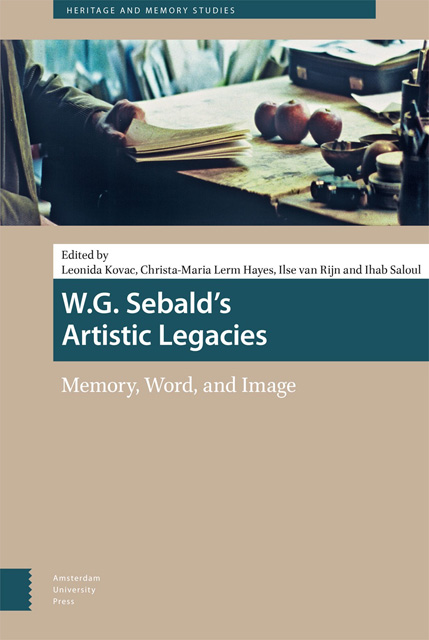1 - W.G. Sebald’s Cartographic Images Mapping the Historical Void
Published online by Cambridge University Press: 26 October 2023
Summary
Abstract
W.G. Sebald’s work contains a number of images: in addition to a large corpus of photographs there are fifteen cartographic images in the form of maps, tables, plans, diagrams, and labyrinths that become iconographic in relation to the texts. Their various effects on the reader are discussed and systematized here through case studies. Against this background, I propose that Sebald’s practice of embedding cartographic images in the tissue of the text is closely connected to his ideas concerning processes of memory, and in particular, his interest in alternative historiographies, which enable a privileged personal entry to the past. Within discourse about the function of cartography for literature, maps are predominantly read in one of two ways (Dünne / Schlögel): either as historical artifacts of a geographically mediated world order, or for their poetic or iconographic dimension. Both models count for Sebald’s writings, wherein he uses cartographic features to evoke identificatory effects with historical places and their imaginary past. In dialogue with Michel de Certeau’s theoretical treatises on space / place (carte / parcours), I raise two central questions concerning Sebald’s use of cartography: What is the iconographic implication of the cartographic image, and why is it important for Sebald’s memory project, linking space, imagination, and processes of remembrance?
Keywords: Post-representational, Pre-history, Epistemological, Cartographic, Psychological and Phenomenological Dichotomy
Introduction
The more images I collected of the past, I said, the more unlikely I found it that the past should have played out in this manner, for nothing about it was what you could call normal, rather it was laughable for the most part, and if not laughable, then appalling.
W.G. Sebald’s alternative historiography, his well-known recollection and reconstruction of the past, is closely connected to a rejection of representational authority situated entirely with the author. Instead, he introduces a narrative voice that cultivates a post-representational mode of perception, by continuously switching perspectives, viewpoints, and mediums, such as text and (cartographic) image. Rather than staying true to a single perspective, Sebald establishes different intellectual/discursive, emotional, affective and self-reflexive points of view.
- Type
- Chapter
- Information
- W. G. Sebald's Artistic LegaciesMemory, Word, and Image, pp. 29 - 46Publisher: Amsterdam University PressPrint publication year: 2023

